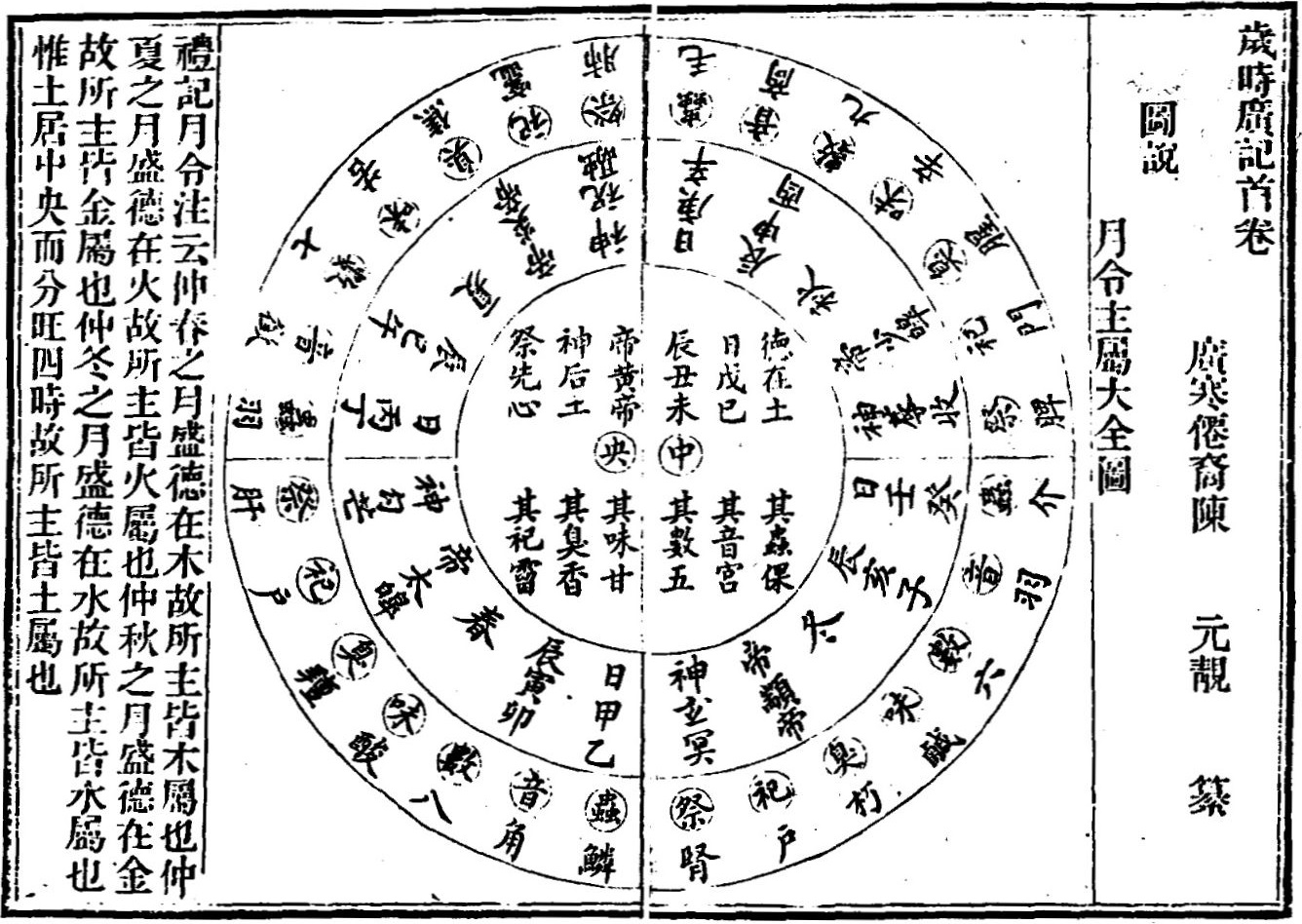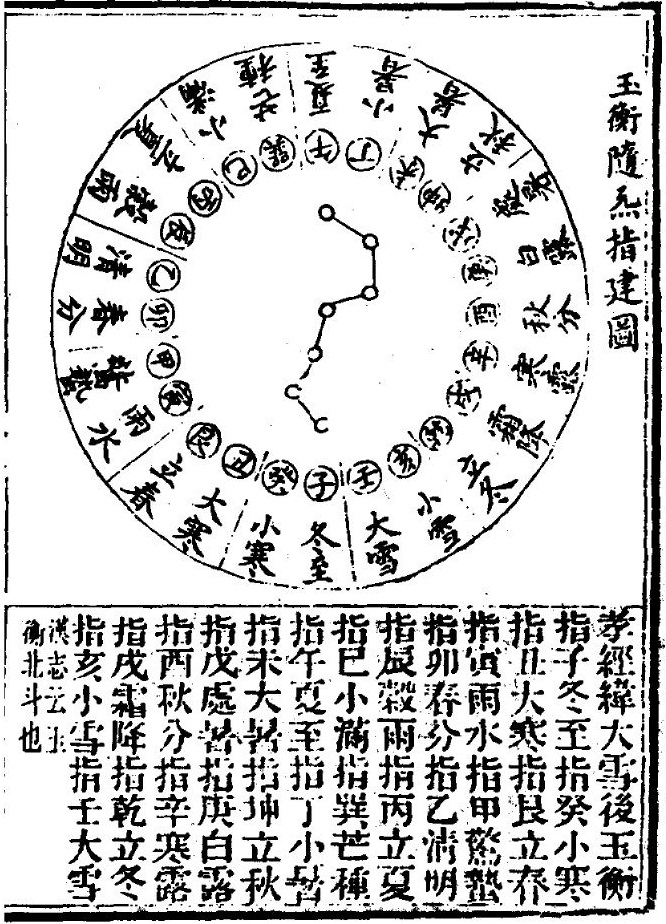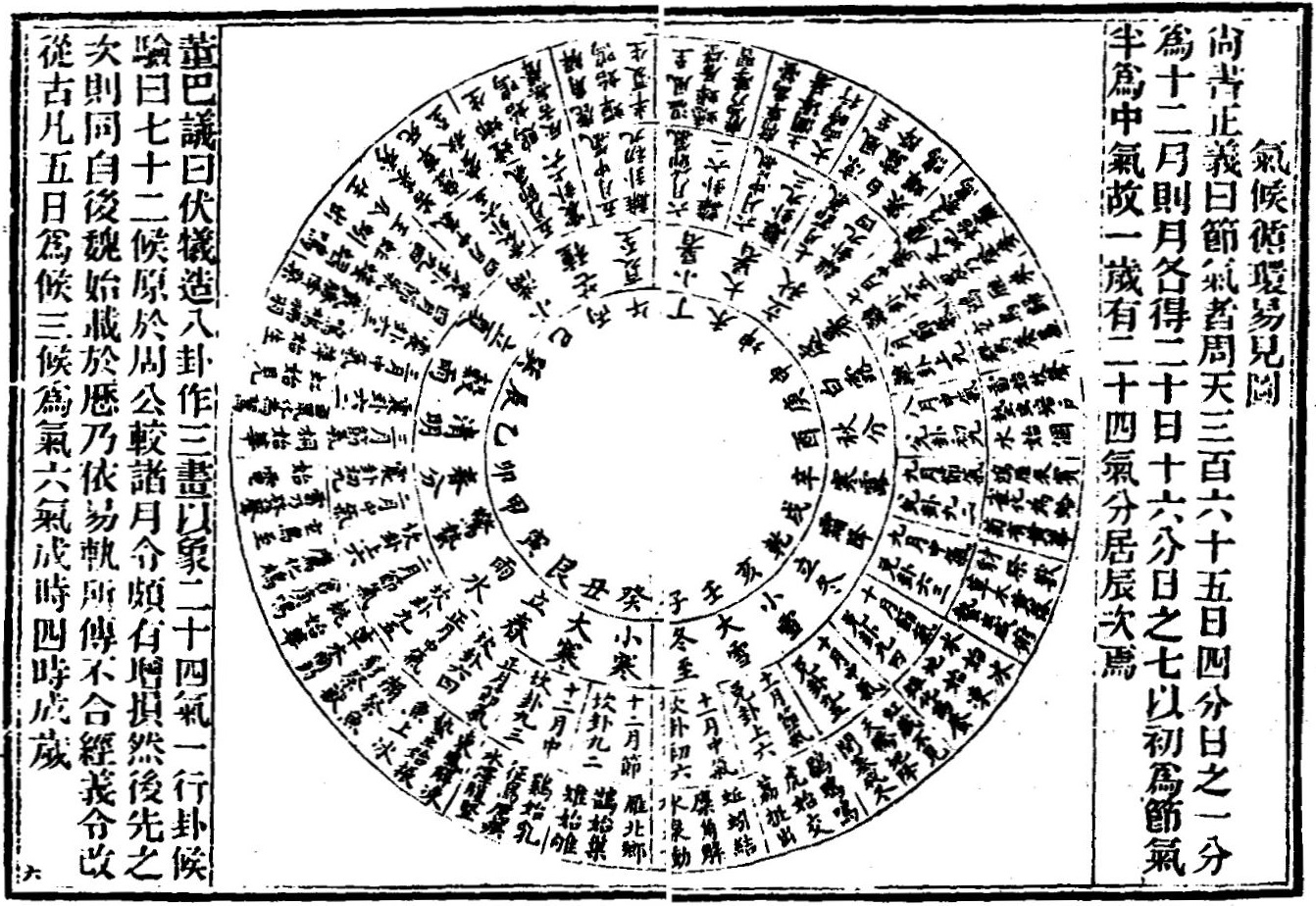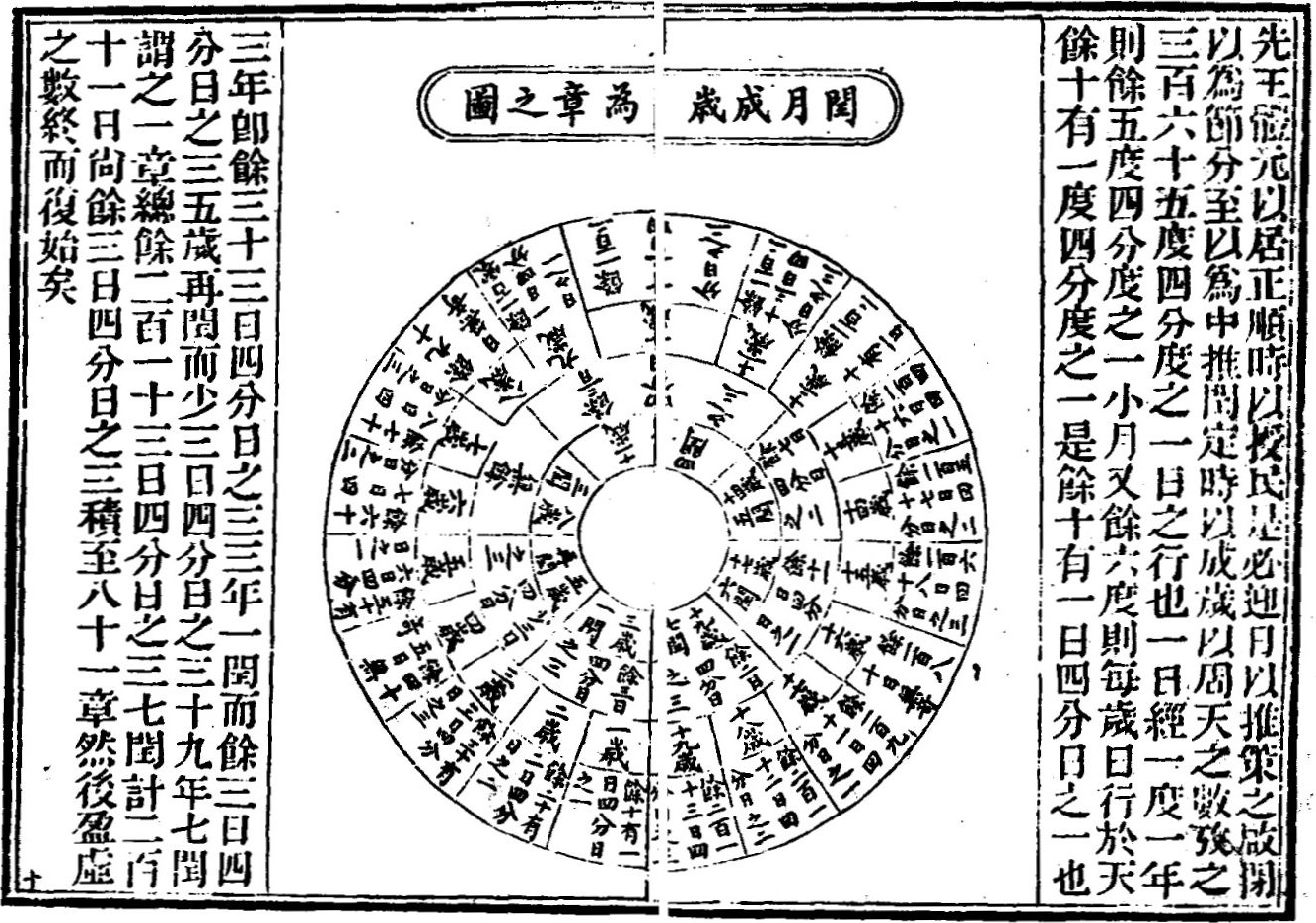Suishi guangji 歲時廣記 "Vast records of the annual seasons" is an overview of the imperial edicts pronounced regularly according to the annual seasons. The 40-juan long book was compiled by the Song-period 宋 (960-1279) scholar Chen Yuanjing 陳元靚 (dates unknown) during the reign of Emperor Lizong 宋理宗 (r. 1224-1264).
The main sources for the Suishi guangji were the Yueling 月令, a chapter of the Confucian Classic Liji 禮記, the Xiaojingwei 孝經緯 and Santongli 三統曆, as well as numerous quotations scattered through a vast amount of books. Most of these sources do not belong to the official regulations for administration, but Chen Yuanjing quotes the original texts and had thus created a valuable treasure about the value of traditional Chinese thinking in daily politics.
 |
|
Correlation of the twelve lunar months with cardinal directions, state sacrifices, offerings at home, odours, tastes, numbers, tones, worms, and mythological emperors. |
|
 |
 |
Left: Correlations of Spring with (outer circle from bottom, clockwise) the Process wood, number three, colour green, energy (qi 炁=氣) warm, taste sour, odour rank, feeling joy, affair appearance, voice cry, fluid tears, spirit hun-soul 魂, solid organ (fu 腑) spleen, hollow organ (zang 臟) liver, sensory organ eye, bodily part muscle, instrument (ze 則) the self (shen 身), musical tone jue 解, conduct (chang 常) kindness (ren 仁), as well as (inner circle) the east, ominous element (xiangrui 祥) Blue Yang 蒼陽, essence (jing 精) blue dragon (canglong 蒼龍), heaven Blue Heaven (cangtian 蒼天), and energy Lesser Yang (Shaoyang 少陽). Right: Movements of the Jade Balance (Yuheng 玉衡, i.e. Big Dipper or Ursa maior) through the year, as related to the twenty-four solar terms (jieqi 節氣), as well as the Celestial Stems (tiangan 天干) and Terrestrial Branches (dizhi 地支). |
|
 |
|
Changes of "climatic conditions" (qihou 氣候) through the year. The "climatic conditions" are not metereological phenomena, but rather metaphysical ones expressed by hexagrams, numbers, and phaenology. The solar term Lichun 立春 "Spring Begins", for instance (at 7 o'clock), is related to the hexagrams gen 艮 and kan 坎, the numbers six 六 and four 四, and is accompanied by the east wind melting ice (dongfeng jie dong 東風解凍), hibernating creatures beginning to move (zhe chong shi zhen 蟄蟲始振) and fishes rising to the ice on the surface of lakes (yu shang bing 魚上冰). |
|
 |
|
Calculator to determine the sequence of intercalary months (runyue 閏月). |
|
The Suishi guangji has been transmitted in two different versions. The first version is only 4-juan long, each juan containing information on one of the seasons, with 46 spring edicts (ling 令), 50 for the summer, 32 for the autumn and 38 edicts concerning the winter. This version seems to have been used by the official central administration. It is included in the series Xuehai leibian 學海類編 and Siku quanshu 四庫全書.
The other version has a length of 40 juan, but fascicle 6 is missing. It is included in the series Shiwanjuanlou congshu 十萬卷樓叢書 and Congshu jicheng chubian 叢書集成初編.
There is actually a third version included in the series Gezhi congshu 格致叢書. It is 4-juan long and includes one richly illustrated chapter.
| 圖説 | Illustrations | |
| 1. | 春 | Spring |
| 2. | 夏 | Summer |
| 3. | 秋 | Autumn |
| 4. | 冬 | Winter |
| 5.-7. | 元旦 | The New Year |
| 8. | 立春 | Beginning of Spring |
| 9. | 人日 | The 7th day of the 1st lunar month |
| 10.-12. | 上元 | The Lantern Festival, 15th day of the 1st lunar month |
| 13. | 正月晦日中和節 | The last day of the 1st lunar month and the Festival of Central Harmony |
| 14. | 二社日 | The two days between Spring and Summer |
| 15.-16. | 寒食 | The festival of the day before Pure Brightness |
| 17. | 清明 | The Tomb-Sweeping Day |
| 18.-19. | 上巳 | The first decade of the 3rd lunar month |
| 20. | 佛日 | Buddha's birthday (8th day of the 4th moon) |
| 21.-23. | 端五 | The 5th day of the 5th month (usually written 端午) |
| 24. | 朝節天貺節 | The Beginning of Summer and the Festival of the solar gifts (the 6th day of the 6th lunar month) |
| 25. | 三伏、立秋 | The three dog days, the Beginning of Autumn |
| 26.-28. | 七夕 | The 7th day of the 7th month |
| 29.-30. | 中元 | The ghost festival on the 15th day of the 7th month |
| 31.-33. | 中秋 | Mid-autumn |
| 34.-36. | 重陽 | The double ninth festival (9th day of the 9th month) |
| 37. | 小春下元 | Small spring and the 15th day of the 10th month |
| 38. | 冬至 | Beginning of Winter |
| 39. | 臘月交年節 | 12th month and Festival of the Turn of the Year |
| 40. | 歲除 | The close of the year |
| 總載 | General record |